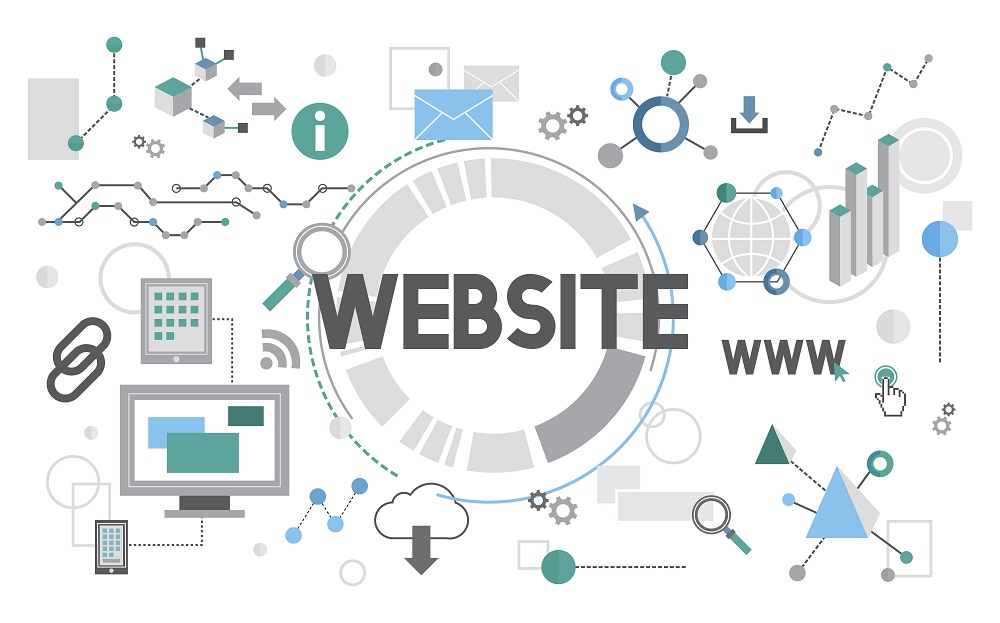If you are reading this blog post then, I can say that you are interested to build a WordPress website where you can write your content and post it.
Then this step-by-step guide can help you doing that. Read clearly so that you can understand it without any misses.
A Beginner’s Guide to Building a Website with WordPress, before going directly into the topic know some basics of WordPress.
WordPress is a powerful and-friendly platform that allows beginners to build professional websites with ease.
Whether you’re just starting or have some experience, this guide helps you with everything for making a great website.
Learning the basics, pick the right hosting, design your site, and make it work well – all the info you need is right here!
Post Contents
Toggle1. Understanding the Basics of WordPress
Before you start making a website, it’s important to know about WordPress.
WordPress is a tool that helps you create and handle websites easily, even if you don’t know how to code.
It comes with a built-in setup and lots of themes and plugins, making it simple for anyone to customize and take care of their websites.
Why Choose WordPress for Your Website
WordPress has gained immense popularity due to its numerous benefits.
It offers flexibility and scalability, allowing you to start with a simple blog and expand it into a fully functional e-commerce site or complex web application.
2. Key Considerations Before You Start
Creating a website needs careful thinking.
Before you start making it, it’s really important to decide what you want your website to do, who you want to visit it, and what kind of stuff you want to put on it.
Knowing the purpose of your website will help you make good choices and make sure your website fits with what you want to achieve.
3. Setting Realistic Goals for Your Website
Setting realistic goals for your website helps you stay focused and motivated throughout the building process.
Decide what you want your website to do, like getting more leads, making more people aware of your brand, or selling things.
When you have clear goals, you can measure how well your website is doing and make changes if needed.
4. Selecting the Perfect WordPress Hosting
Picking the right hosting provider is really important for how well your website works and how secure it is.
Choose a provider that has good uptime (meaning your website is online a lot), quick load times, and helpful customer support.
Think about things like where their servers are, if they can grow with your website, and how much it costs.
Some well-known hosting providers for WordPress are Bluehost and Hostinger.
5. Getting Started with WordPress
Now that you have a solid foundation, let’s get hands-on with building your website using WordPress.
This part will guide you through the practical steps, starting from setting up WordPress on your hosting account to working with the WordPress dashboard.
You’ll learn how to customize your website settings and explore themes and plugins to make your site unique and functional.
Installing WordPress on Your Hosting Account
Installing WordPress is quite easy, and many hosting providers provide a one-click installation feature.
Once you’re in your hosting account, find the option for installing WordPress, follow the instructions, and in just a few minutes, you’ll have WordPress set up and ready to go on your website.
Exploring the WordPress Dashboard
The WordPress dashboard is like the command center for your website.
It’s where you can control your content, change how your website looks, and add plugins.
Take some time to explore the various parts of the dashboard, like Posts, Pages, Appearance, and Plugins. Getting familiar with these sections will give you complete control over your website.
Customizing Your Website Settings
WordPress offers different settings that let you customize your website to fit your preferences.
You can adjust general settings such as the site title and description, as well as more advanced configurations like permalinks and user roles.
Take your time to personalize these settings according to the specific needs of your website.
WordPress Themes
WordPress provides a wide range of themes that define how your website looks.
Explore the available options and pick a theme that matches your brand and website objectives.
Look for themes that are responsive, customizable, and check user reviews to ensure it meets your needs.
Some of the most famous themes in WordPress are Divi, Ultra, Astra, OceanWP, StudioPress.

Importance of Plugins for Your Website
Plugins are like tools that make your WordPress website do more things, such as adding forms, improving how search engines find your site, or enabling online shopping.
There are many plugins to choose from, so pick the ones you really need for your website.
But be careful not to use too many because that can make your site slower.
Choose the ones that help your website the most.
Best Plugins that you must install right now into your website.
6. Designing Your Website
Making a website that looks good and is easy for people to use is really important for getting your message across.
Design your website with ease thanks to the Elementor plugin (no coding hassle)!.
This live page builder allows you to design WordPress sites in real-time.
Building a Strong Website Structure
Determine the main sections and pages of your website and organize them in a clear structure.
With WordPress, you can make pages for things that don’t change often, like About Us, Contact, and Services.
Also, set up a menu so visitors can easily move around your site and find what they’re looking for.
Designing a Stunning Website with Themes
How your website looks is really important for keeping people interested.
With WordPress themes, you can customize things like colors, fonts, and layouts to make your site look just how you want.
Use customization options to match your website’s design with your brand and make it visually appealing for visitors.
Adding and Formatting Engaging Content
Good content is the key to a successful website.
With WordPress’s easy-to-use editor, you can add and format text, put in pictures and videos, and create layouts that look great.
Make sure your content is easy to read and interesting, giving valuable information without mistakes.
Showcasing Media Content Effectively
Pictures and videos can make your website much more interesting.
WordPress has tools for managing media, letting you upload, organize, and show off your pictures and videos.
Make sure your images are optimized for the web, use galleries and sliders, and include videos from places like YouTube or Vimeo to make your website look really appealing.
Optimizing Your Website for Mobile Devices
Because most people visit websites on their phones or tablets, it’s important to make sure your website looks good and works well on these devices.
WordPress has responsive themes that adapt to different screen sizes automatically.
Test your website on different mobile devices, make sure it loads quickly, and make sure it’s easy to use on all devices.
7. Enhancing Website Functionality
WordPress plugins are like tools that help your website do more things.
In this part, we’ll look at three important types of plugins:
Contact Form Plugins: These make it easy for people to send you messages, helping with communication on your website.
SEO Plugins: These improve how easily people can find your website on search engines, making it more visible.
Security Plugins: These help protect your website from any unwanted stuff, keeping it safe.
8. Optimizing and Maintaining Your WordPress Website
Creating a website is just the beginning.
It’s also crucial to make it work better and keep it up to date.
Optimizing Images: Make pictures load quickly so your site is fast.
Caching: Improve speed by using caching, which stores some data for quicker access.
Minimizing CSS and JavaScript: Make your website more efficient by reducing the size of certain files.
Routine Backups: Protect your data by regularly saving copies of it.
Google Analytics: Check how your website is doing by looking at metrics with Google Analytics.
Great job! You’ve covered the basics of building a website with WordPress.
With this beginner’s guide, you have the tools to make a successful website that connects with your audience, meets your goals, and gives users a smooth experience.
Keep working on your website, keep an eye on how it’s doing, and stay updated with what’s new in the world of WordPress.
Good luck!
Why wait? Begin creating your dream website with WordPress today, and let your creativity and potential shine in the online world!
If you have any questions or need assistance along the way, feel free to ask.
Happy building!
FAQs
Q: Is WordPress the only platform to build a website?
A: No, there are other website builders available, but WordPress offers a powerful and versatile solution with a large community and extensive plugin ecosystem.
Q: Do I need coding knowledge to build a website with WordPress?
A: No, WordPress provides a user-friendly interface with drag-and-drop functionalities that eliminate the need for coding skills.
However, having some basic knowledge of HTML and CSS can be beneficial for more advanced customization.
Q: Can I switch to a different WordPress theme after designing my website?
A: Yes, you can change your WordPress theme at any time while keeping your existing content intact.
However, switching themes may require some adjustments and testing to ensure everything displays correctly.
Q: Are there any costs involved in building a website with WordPress?
A: While WordPress itself is free, you may need to pay for domain registration, hosting, premium themes, and plugins, depending on your requirements.
It’s important to consider your budget and needs while building your website. premium themes, and plugins, depending on your requirements.


